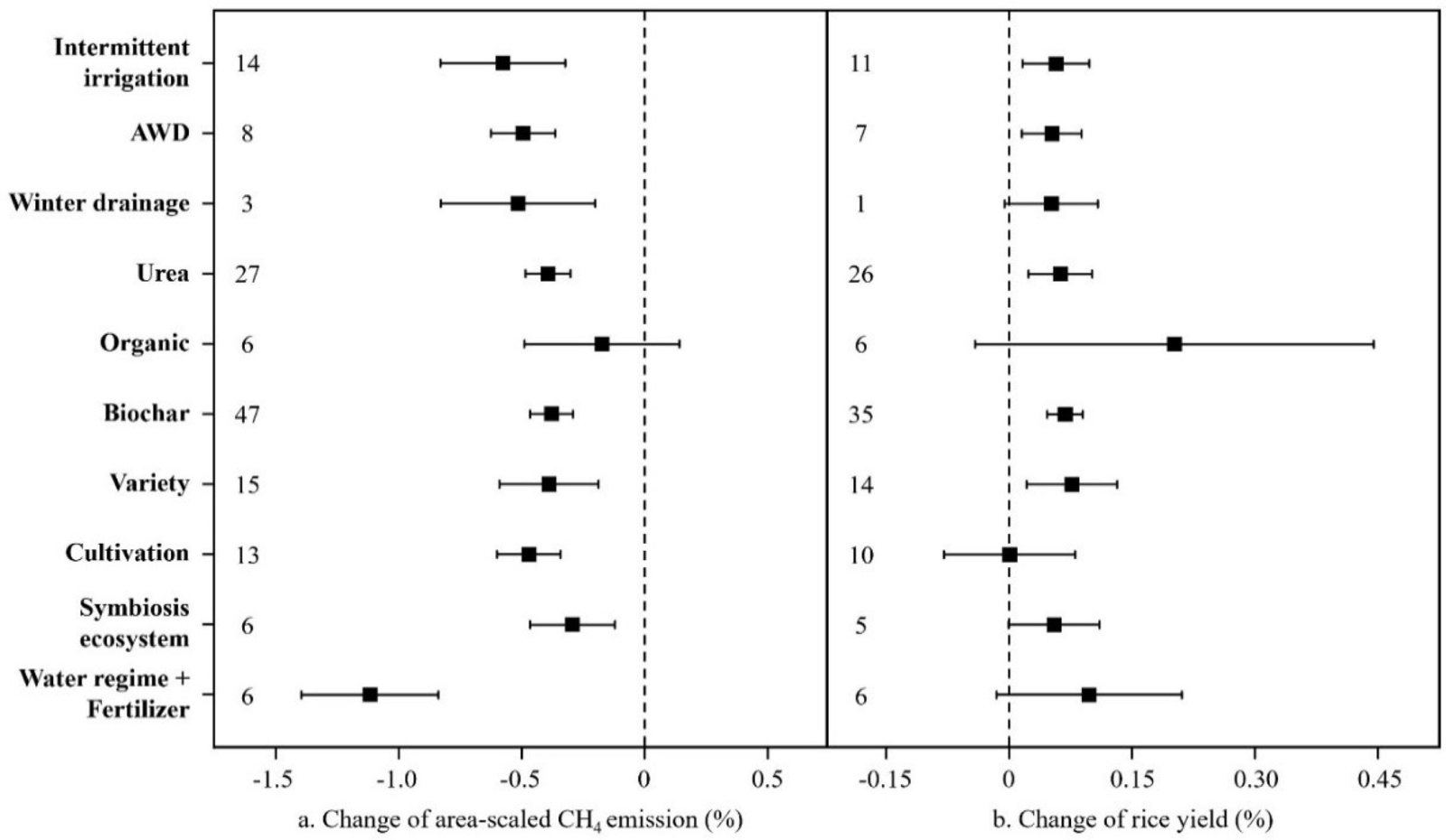March, 2024 | Resources, Conservation and Recycling | Source |
Introduction: China being the largest rice producer, representing 21.75% of global methane (CHâ‚„) emissions from rice cultivation, thus mitigating methane emissions is critical for both domestic and global climate objectives. While past studies explored individual practices, gaps persist in understanding the heterogeneity of outcomes and the combined effects of existing mitigation measures. This study, conducted by a multidisciplinary research team from Chinese academia, employs a meta-analysis to evaluate 10 mitigation strategies using field data to address the effectiveness as well as regional variability.
Key findings: The study assessed the effects of 10 CHâ‚„ mitigation measures on emissions and rice yields, included water management (intermittent irrigation, AWD, winter drainage), fertilizer management (e.g., deep placement, biochar, urea with additives), agricultural practices (new rice varieties, cultivation techniques), and integrated water-fertilizer systems.
- Water Management: Intermittent irrigation, AWD and winter drainage techniques significantly reduce methane emissions by 43.83%, 38.99%, and 40.24% respectively, while boosting water productivity, enhancing nutrient absorption and thus in elevated yields. Despite these benefits, increased Nâ‚‚O emissions and reduced soil carbon sequestration present challenges.
- Fertilizer Management: Nutrient management technologies such as CRU (polymer-coated controlled release urea), NU (urea with N-Sever nitrapyrin), DMPP (urea with 3,4-dimethylpyrazole phosphate), EM (urea with effective microorganisms) and deep placement treatments can reduce excessive fertilizer use, improving nitrogen utilization efficiency, thus mitigating methane emissions by up to 32.49% and boosting yields by 6.46%. However, high cost and variance in outcomes limit their adoption in rice farming. Other techniques like biochar cut emissions by 31.51% while enhance soil quality and lead to higher yields, the methane reduction effect increases overtime.
- Tillage Management: New rice varieties, direct-seeding, plastic mulching, and symbiosis ecosystems can collectively lower methane emissions and improve yields at various levels. High-yield, drought-resistant varieties and ecological practices could enhance nutrient cycling, yet direct-seeding methods might face challenges like increased herbicide use and disease risks.
In addition, the meta-analysis reveals that water-fertilizer coupling management outperforms single measures and is the most effective methane mitigation strategy, achieving a 67.27% reduction while enhancing crop yields. Followed by water management, tillage management, and fertilizer management. Multiple studies affirmed that water management is pivotal in methane mitigation in rice fields. Methane mitigation in rice paddies is further influenced by factors like rice variety, climate, soil pH, precipitation, and cultivation methods, with multivariate analysis showing stronger impacts than single-factor studies, highlighting the need for region-specific, multifactor policy approaches to enhance emission reduction effectiveness.

Figure | Results of meta-analysis on the responses of area-scaled CH4 emission (a) and rice yield to changes (b) in mitigation management.






